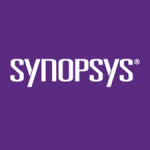Applications Engineer, Sr I

Website Synopsys
The Design-for-Test Applications Engineer works in a project-oriented environment to deliver complex DFT flows and methodologies across varying industry segments like Autonomous Transportation, Mission critical AI, High performance computing and Mobile networking.
The DFT engineer interacts with the customers to assess their methodologies and flows and provides feedback to the Test Product business unit on customer DFT requirements.
The engineer also interfaces with the Solutions architect team and R&D and provides feedback to the Test product business unit on customer specifications and requirements.
Responsibilities may include a subset or all of the following:
- Consultation for test solutions during design planning/budgeting.
- Test methodology design rules checking during RTL coding stages.
- Implementation of design for test (DFT) compression, automatic test generation (ATPG) for single stuck at (SSAF), Transition Delay Fault, Cell-aware faults, and other advanced fault models
- Architect and implement solutions for built-in self-test (Memory and Logic BIST) circuitry to test devices in the field.
- Participation in customer’s design and flow reviews.
- Diagnostics analysis and debug.
- Provides methodologies for test automation flow integration with design planning, RTL analysis, logic synthesis, physical design and sign-off verification tools (static timing, simulation, formal verification).
- Develops white-papers on methodology and other documentation as may be required for projects.
- Provides technical support/expertise for customers operating Synopsys test automation tools in a wide variety of application scenarios.
- 5-12+ years of hands-on experience with Synopsys/Mentor/Cadence/Syntest Design-for-Test tools, flows, and methodologies.
- Excellent communication and presentations skills are mandatory. Listening, understanding, and interpreting the customer requirements are a key part of the communications skill set. Good technical problem solving skills are a must.
Design and verification experience is a plus.






Moore’s Law Wiki